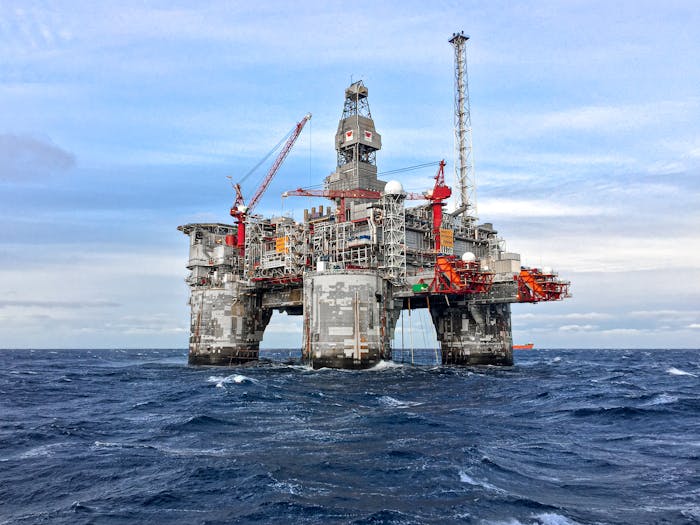
Top 10 Essential Construction Services for Oil Field Operations
As the global energy landscape continues to evolve, so does the need for oil field companies to face new challenges with a technological edge. The energy industry has pressed hard for sustainable and renewable energy, but it still draws a quite reasonable quantum of its supply from oil and gas sources in the form of power and industrial processes. Innovation in oil field services is quite essential to ensure that energy production remains effective, safe, and viable from an ecological point of view.
This article outlines innovative oil field companies as the backbone in shaping the future of energy. Key services shall involve but shall not be limited to crude handling and compressor stations, gas lift installations, tank battery construction, among others.
Table of Content
- 1 Evolution of Oil Field Companies
- 1.1 Oil Terminal and Crude Handling Facilities
- 1.2 2. Compressor Station Construction
- 1.3 3. Gas Lift Installations
- 1.4 4. Tank Battery and Central Tank Battery Construction
- 1.5 5. Pumping Station Construction
- 1.6 6. Process Facility Construction
- 1.7 7. Cryogenic Facilities
- 1.8 8. Amine Facilities
- 1.9 9. LPG Storage and Handling Facilities
- 1.10 10. Metering Facility Construction
- 2 FAQ
- 2.1 Why is innovation important in oil field services?
- 2.2 What are some of the key technologies driving innovation in oil field services?
- 2.3 In what ways would oil field companies be of help in contributing to sustainability?
- 2.4 What is the future of oil field companies in a world focused on renewables?
- 2.5 Related Posts
Evolution of Oil Field Companies
Over the century, oil field companies have played an indispensable role in the exploration and production of petroleum products. Their ability to morph into various forms has also made them a cornerstone within the energy sector in response to technological and market demands. With changing times that lay more emphasis on the reduction in carbon emissions and growth in renewable energy, this is an area that needs modernization.
Oil Terminal and Crude Handling Facilities
Most of the economical handling of crude is considered the heartbeat of any oil operation. Oil terminals and crude-handling facilities are types of facilities that provide various services in the receipt, storage, and transportation of crude and other hydrocarbons. Such facilities are actually the entrance gate through which crude oil reaches refineries or is exported to other parts of the world. With stringent environmental regulations on land and sea, for the prevention of spills, minimization of emissions, and improvement in general operational safety, it becomes necessary for innovation in handling crude.
1. Trends in Crude Handling Innovations
Automation and Digitization: State-of-the-art control systems to monitor crude flow in real time-assisted by sensors to maintain safety and efficiency.
Eco-friendly Design: Infrastructures are going greener with designs that reduce impacts on the environment. As part of this wide trend, companies have adopted designs with secondary containment systems and vapor recovery technologies.
AI Integration: AI-powered predictive analytics can optimize storage and distribution patterns to help prevent overflows and reduce waste.
2. Compressor Station Construction
Compressor stations are crucial to pipeline transportation of natural gas; they work on maintaining the gas at the needed pressure to make it flow. With the tremendous rise in the demand for natural gas, compressor stations should adjust to energy efficiency and eco-friendly functionalities.
Technological Advancements in Compressor Stations:
Energy-Efficient Compressors: Turbine and reciprocating compressors have undergone several innovations that greatly improved energy efficiency.
Emission Reduction Technologies: As already noted, new compressor stations are designed to implement controls for emissions through catalytic reduction systems and low-emission burners in conformation with the existing environmental standards.
Remote Monitoring and Maintenance: IoT solutions also provide for real-time monitoring of compressor stations, enabling predictive maintenance mechanisms that reduce the likelihood of system failure.
3. Gas Lift Installations
Among such factors, gas lift systems probably have a relative importance for enhancing oil recovery, especially for a number of mature oil fields whose reservoir pressure has fallen. The technology involves the injection of gas into the well to reduce the hydrostatic pressure, making it easier for oil to flow up to the surface.
Innovations in Gas Lift Technology
The Intelligent Gas Lift System: Smart gas lift systems use automated valves and sensors to optimize gas injection rates for increased efficiency in oil recovery, while reducing energy consumption.
Big Data Analytics in Real Time: Integrating big data analytics allows operators to continuously monitor well performance and act on those readings immediately to maximize output.
Sustainable Solutions: New designs for gas lifts now target reduced carbon footprints by using gases that have lesser environmental impacts, such as nitrogen or carbon dioxide in enhanced oil recovery.
4. Tank Battery and Central Tank Battery Construction
Tank batteries are an essential part of crude oil and other liquid storage, most frequently at well sites. A central tank battery can serve several wells with increased efficiency in operations.
Innovative Trends in Tank Battery Construction
Modular Designs: Since the scalability is allowed by the modular tank systems, then the maintenance of such systems is easier hence reducing considerable down time and operational costs.
Leak Detection Systems: Advanced sensors serving the purpose of leak detection at early stages of the operation evade the occurrence of costly spills and environmental damages.
Improved Materials: Using of corrosion resistant materials and coatings in the making of tanks guarantees longer operational life and lesser frequency of maintenance.
5. Pumping Station Construction
As a result, the pumping stations are crucial in the process of long distance oil and gas transportation. These pumping stations need to be working effectively and also in a reliable manner for the continuous supply of energy products.
Technological Advancements in Pumping Stations
Variable Speed Drives: VSD technology allows pumping stations to vary the flow rates according to demand. This reduces consumption of energy and minimizes wear and tear on equipment.
Automated Control Systems: Integrated control systems enable operation and real-time monitoring from remote sites, reducing the need for manual interventions.
Smart Energy Solutions: Modern designs and construction of pumping stations feature renewable energy sources, like solar panels and wind turbines, reducing reliance upon mains electricity and thereby reducing carbon emissions.
6. Process Facility Construction
Process facilities are concerned with the treatment of oil, gas, and other hydrocarbons. In recent times, the emphasis with increasing environmental standards has fallen on minimizing waste and emissions during treatment.
Process Facilities Innovations
Improved Separation: Advancement in the design of separators and scrubbers increases efficiency by decreasing waste and improving recoveries of valuable hydrocarbons.
Recovering Waste Heat: New facilities are trying to implement waste heat recovery units whereby the waste heat is captured and converted into energy, which means better efficiency and lesser emission.
Digital Twins: Digital twin is a digital replica of the facility wherein operations could be simulated and optimized with it prior to implementation in the real world.
7. Cryogenic Facilities
Cryogenic facilities play a very critical role in storage and transportation of natural gas, primarily LNG. Innovations in cryogenic technology are quite important for safe and efficient operations.
Cryogenic Facilities: Innovative Trends
Advanced Insulation Materials: The modern cryogenic tanks are designed with advanced insulation in order to reduce heat ingress in the liquid, which ensures the safe storage of LNG for extended periods.
Efficient Liquefaction Processes: As technological enhancements take place with regards to the liquefaction process, there comes a reduction in energy consumption and, subsequently, operational costs.
Automation and Safety: Such automation also works to enhance the safety of cryogenic operations through automated systems for pressure and temperature regulation in place, further reducing the occurrence of human error.
8. Amine Facilities
Amine facilities are usually employed for gas sweetening, in which H₂S and CO₂ are removed from the natural gas. Such facilities are hence considered vital in guaranteeing that the gas will meet both pipeline specifications and required environmental limits.
Recent Developments in Amine Facilities
Improved Amine Solvents: The research into more efficient amine solvents has come up with solutions requiring less energy for regeneration, hence improving the total energy efficiency in the facility.
Advanced Control Systems: Automation of amine facilities enables precise control of gas sweetening processes so that performance is optimized and waste minimized.
Carbon Capture Integration: Some amine plants also incorporated carbon capture technology into their process flows to reduce CO2 emissions and help meet climate objectives.
9. LPG Storage and Handling Facilities
LPG, or liquefied petroleum gas, is a versatile fuel; its storage and handling require specially fitted facilities so that it is safe and efficient.
LPG Storage and Handling: New Innovations
Safety systems: The latest facilities are fitted with the latest safety systems, including automated shutdowns and emergency response technologies.
Energy efficiency in refrigeration: Most of the handling of LPG involves the need for refrigeration, and this is apparently where new technologies in refrigeration cut energy consumption while keeping the product safely below its boiling point.
Practicing Sustainability: The inevitable trend is the use of renewable energy sources to supply power to the facilities housing LPG in storage, so as to reduce the carbon footprint.
10. Metering Facility Construction
Metering facilities are another important unit where correct oil and gas measurements are required at the production, processing, and transportation stages.
Technological Changes in Metering
Digital Flow Meters: The latest technological advancement in metering involves the use of accurate and efficient digital flow meters that can provide current data, therefore ensuring more transparency during the billing process.
IoT Integration: The smart metering facilities are integrated with IoT for continuous monitoring and remote changes toward better operational efficiencies.
Improved Calibration Techniques: New technologies in calibration give accurate volumes of hydrocarbon measurement, reducing discrepancies and helping to comply with regulatory requirements.
FAQ
Why is innovation important in oil field services?
Innovation in the oil field services will be necessary to continue improving operational efficiency by a reduction in the environmental burden and the changing market needs. It shall be a good means that enables the organization to improve safety, reduce costs, and increase conformation with regulations.
What are some of the key technologies driving innovation in oil field services?
Key technologies include automation, AI, IoT, digital twins, advanced materials, and renewable energy integration. These technologies work towards optimizing operations and improving safety while reducing emissions.
In what ways would oil field companies be of help in contributing to sustainability?
Oil field companies contribute to the sustainability of the economy by the adoption of energy-efficient technologies, reduced emission, using eco-friendly materials, and integration of renewable sources of energy.
What is the future of oil field companies in a world focused on renewables?
The future of oil field companies will continue to contribute greatly in energy production as the world shifts to renewables. Their attention will be centered on efficiency, emission reduction, and the integration of clean energy into their operations.
Conclusion
The future of energy will be shaped by the innovativeness of oil field companies in adapting to new technologies and market demands. From crude handling facilities to the advanced cryogenic system, efficiency, safety, and sustainability are being induced in this industry. These innovations secure a leading position in oil field companies for the shifted energy landscape globally and substantial contributions toward a balanced, secure energy future.


